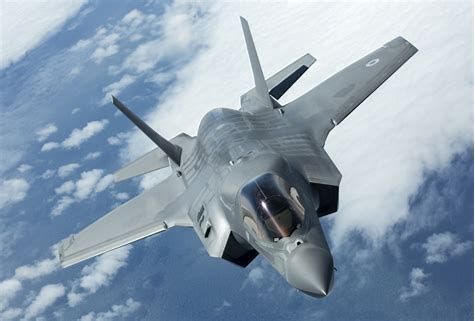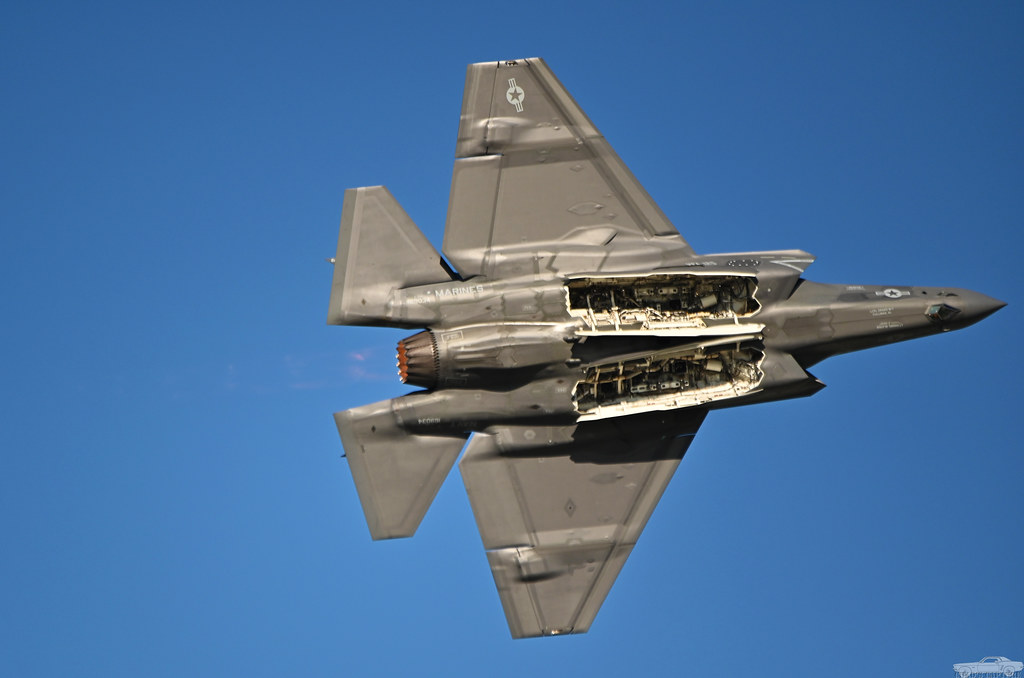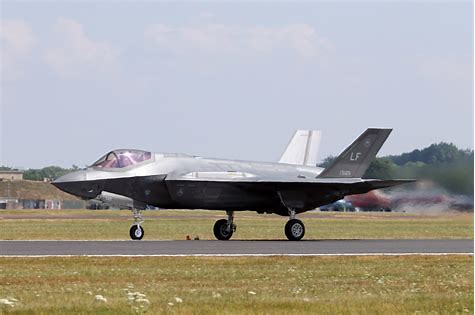
The F-35 Lightning II showcases modern military innovation, serving as a versatile stealth fighter intended to succeed various aging aircraft within the U.S. Armed Forces.

Developed under the multinational Joint Strike Fighter program, this advanced aircraft is set to supplant respected planes such as the A-10 Warthog, the dependable F-16 Fighting Falcon, and the carrier-based F/A-18E Super Hornet, among others.

Featuring three unique versions—the standard F-35A, the short takeoff and vertical landing (STOVL) F-35B, and the carrier-ready F-35C—Lockheed Martin’s masterpiece offers unmatched flexibility and capability.

The journey of the F-35 began with the X-35 demonstrator’s first flight on October 24, 2000, which paved the way for the F-35A’s inaugural developmental flight in 2006.

Since then, the aircraft has come a long way, with the Air Force’s F-35s entering combat for the first time on April 30, 2019, during Operation Inherent Resolve. As the recent production deal agreed in December 2022, featuring the first Tech Refresh 3 (TR-3) aircraft, the Lightning II is set for a notable enhancement through the Block 4 iteration.

This enhancement will boost the F-35A’s capabilities with new weapons like the nuclear B61-12, the Stand-in Attack Weapon (SiAW), and the Small Diameter Bomb II (SDB II), in addition to radar sensor and electronic warfare upgrades.

The F-35A demands increased engine performance to harness the full potential of Block 4. After testing prototype engines by GE and Pratt & Whitney, offering a potential 30% range increase, the U.S. Air Force opted for an Engine Core Upgrade due to cost and variant-interoperability factors.

All three F-35 variants are undergoing engine modifications to address harmonic resonance issues, a precaution following the three-month halt in F-35 deliveries caused by an F-35B crash in December 2022.

As the F-35 program prepares for operational testing this year, a decision on full-rate production looms, which could result in cost-saving multiyear block purchases. Congress has approved the acquisition of 43 more airframes for FY23, indicating faith in the program’s success and future.

The Lightning II’s global popularity is evident, as countries such as the Czech Republic, Germany, Finland, and Switzerland have recently added this advanced jet to their fleets.

The F-35’s electronic sensors feature the Electro-Optical Distributed Aperture System (DAS), offering pilots situational awareness around the aircraft for improved missile warning, aircraft detection, and day/night vision.

Moreover, the aircraft is outfitted with the Electro-Optical Targeting System (EOTS), enabling extended range detection and precise targeting of ground targets, as well as long-range detection of air-to-air threats.

More that,the F-35 features advanced tactical data links for secure data sharing among its members and other platforms needed for missions.

JSF partner nations’ commitment to shared communication abilities and web-based logistics support will enhance Coalition interoperability. These features position the F-35 at the forefront of transitioning the defense community to a net-centric warfighting force.

The F-35 Lightning II, with its mix of cutting-edge stealth, technology, and versatility in its different versions, is more than just a plane—it stands as a powerful emblem of air dominance, poised to shape the skies in the future.
Relevant articles:
– F-35 Lightning II Archives, airandspaceforces.com
– 10 Most Advanced Fighter Jets in the World, tempo.co
– F-35A Lightning II, AF.mil
– F-35 Lightning II: Everything to Know about Lockheed’s Stealth Fighter Jet, ExecutiveGov, Dec 1, 2023

